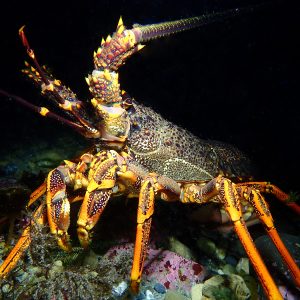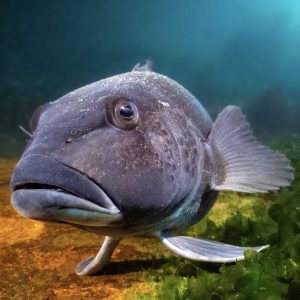Crayfish stocks are in crisis and recreational fishers are calling for an independent review of the fisheries management system.
Currently, crayfish in the CRA 2 region (which extends from Pakiri through the Hauraki Gulf to the East Cape) are at an all-time low. The latest official assessment shows that the crayfish population has been in decline for many years, and at the start of the current fishing year the amount of legal crayfish in the water represented 5% of what was available before large scale fishing.
In the Hauraki Gulf, several scientists recently described crayfish as “functionally extinct”, unable to carry out their natural function, yet MPI has continued with its laissez faire, hands off stance.
Now, MPI is calling for input on several options for the future management of CRA2 and the New Zealand Sport Fishing Council, along with LegaSea, needs your help to submit a response by February 9.
Spokesman Scott Macindoe says the time for action is now.
“This is exactly the sort of situation we’ve been warning about with regard to the Quota Management System. The QMS is allowing industrial fishing to take place without effective governance from the Ministry that is charged with managing marine resources on behalf of all New Zealanders. Instead, MPI has stood back while the fishery has declined to the stage where even experienced divers struggle to find even one legal crayfish in a season.”
Macindoe says there are increasing reports of recreational fishers not even bothering to fill their tanks and look for crayfish in the past few summers.
Last year, 78% of survey respondents told LegaSea that the size and availability of crayfish in the CRA2 region was either decimated or close to it. There was majority support for a seasonal or total closure to rebuild crayfish stocks. In response to public pressure the then Minister brought a management review forward by a year in an acknowledgement that current management had failed.
“Last year we said the situation was reaching crisis point – now we have the Ministry conducting a consultation process and only giving the public 18 working days to respond. LegaSea and the New Zealand Sport Fishing Council are asking members of the public to tell the Minister just what they believe needs to be done to save this fishery.”
Commercial fishers have doubled their cray potting effort over the past 16 years and yet they are catching fewer crays now than what they were at the beginning of the 21st century. By all independent measures the stock is collapsing, yet MPI and the National Rock Lobster Management Group have until now adopted temporary measures and a watch and see approach. Recreational fishers want action now.
“This isn’t about recreational and customary rights versus commercial rights, it’s about ensuring sustainability and healthy ecosystems taking priority, and it’s about protecting the resource for future generations. We need to stop this madness in CRA2. Recreational fishers have developed a manifesto that encompasses a new way forward. We need a total overhaul of the Quota Management System and we need a new way to oversee New Zealand’s fisheries.”
LegaSea is repeating its call for a Commission of Inquiry into the state of fisheries management in New Zealand.
ENDS
The survey can be found at www.legasea.co.nz/crayfishcrisis/ and we urge all New Zealanders to let us know what they would like to see happen.
For more information please contact:
Paul Brislen
[email protected]
021988896
About LegaSea’s Manifesto
www.legasea.co.nz/manifesto/
LegaSea’s manifesto covers five main points which we believe will ensure a more sustainable fisheries management platform:
- Establish a Royal Commission of Inquiry into fisheries management and the Quota Management System.
- Amend the Fisheries Act 1996 to include an Allocation Principle.
- Remove industrial fishing methods such as trawling, seining and dredging from the inshore zone.
- Establish a separate, well-resourced Ministry of Fisheries.
- Amend section 13 of the Fisheries Act 1996 to replace the minimum stock target of BMSY with a minimum biomass target of B50 – that is 50% of the unfished stock size.
References
Crayfish functionally extinct in the Hauraki Gulf – https://www.stuff.co.nz/business/farming/83684122/crayfish-functionally-extinct-in-the-hauraki-gulf
Survey of CRA 2 recreational rock lobster fishers – https://www.legasea.co.nz/articles/24754/





